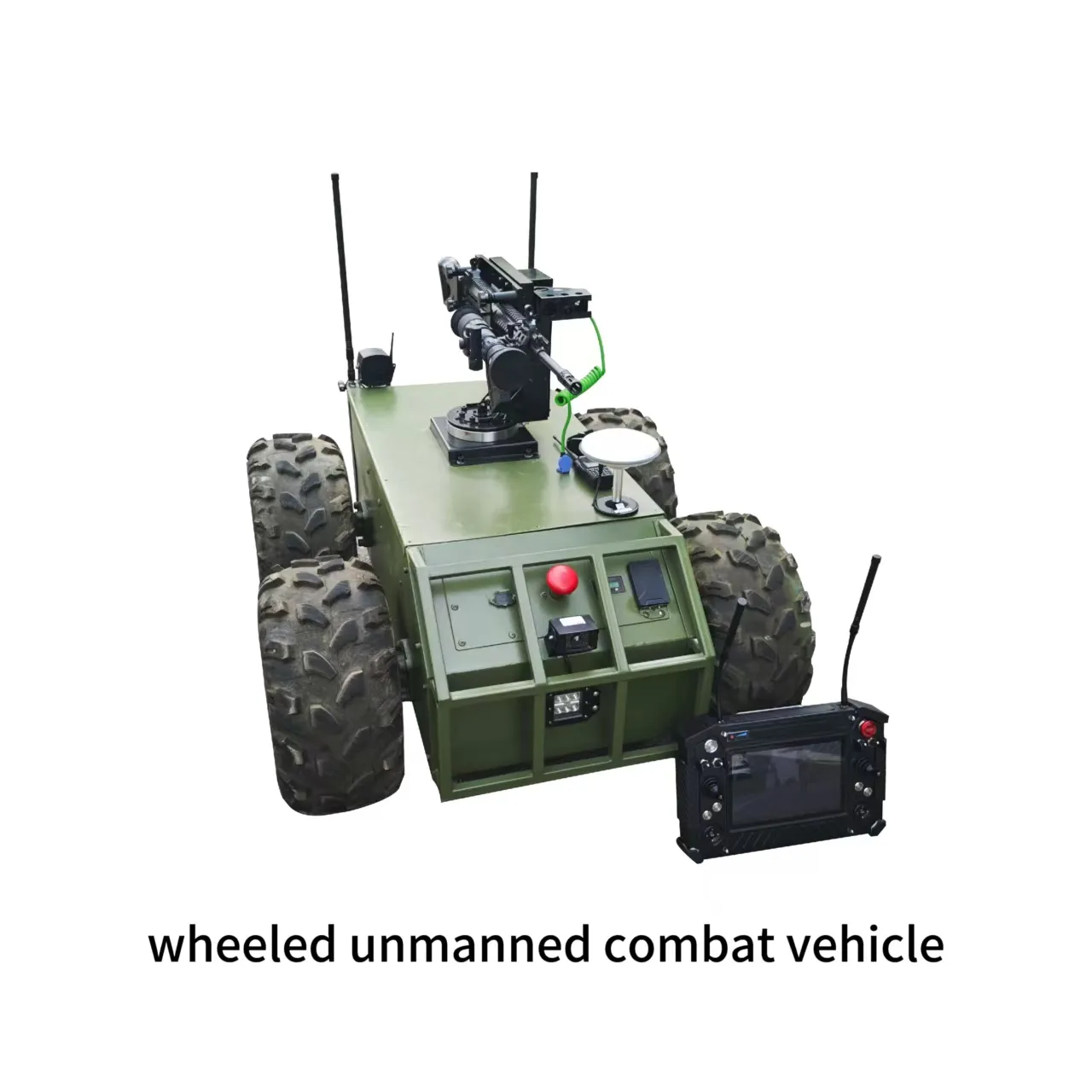পরিবহনের চিত্রপট একটি নাটকীয় রূপান্তরের মধ্য দিয়ে যাচ্ছে কারণ মানববিহীন যান ভবিষ্যতের গতিশীলতার প্রধান ভিত্তি হিসাবে উঠে আসছে। শহরের রাস্তায় নিঃশব্দে চলমান স্বায়ত্তশাসিত গাড়ি থেকে শুরু করে মাথার উপর দিয়ে ঘন ঘন উড়ন্ত ডেলিভারি ড্রোন—এই প্রযুক্তিগত বিস্ময়গুলি মানুষ এবং পণ্য পরিবহন সম্পর্কে আমাদের চিন্তাভাবনাকে পুনর্গঠিত করছে। আমাদের দৈনন্দিন জীবনে নিয়ন্ত্রকহীন যানবাহনের একীভূতকরণ কেবল প্রযুক্তিগত অগ্রগতির চেয়ে বেশি কিছু—এটি মানুষ এবং পরিবহন ব্যবস্থার মধ্যে সম্পর্কের একটি মৌলিক পরিবর্তন।
আমরা যে বিপ্লবাত্মক পরিবর্তন লক্ষ্য করছি, তার মধ্যে দিয়ে বিশ্বজুড়ে শিল্পগুলি স্বায়ত্তশাসিত পরিবহন সমাধানের সম্ভাবনাকে গ্রহণ করতে খাপ খাচ্ছে। এর প্রভাব ব্যক্তিগত যানবাহনের বাইরেও প্রসারিত, যা যাত্রীবাহী পরিষেবা থেকে শুরু করে লজিস্টিক্স, ডেলিভারি পরিষেবা এবং জরুরি প্রতিক্রিয়া ব্যবস্থা পর্যন্ত সবকিছুকে স্পর্শ করছে। এই রূপান্তর নিরাপত্তা বৃদ্ধি, দক্ষতা উন্নতি এবং অভূতপূর্ব সুবিধাপ্রাপ্তির প্রতিশ্রুতি দেয়, যা একসময় বিজ্ঞান কল্পকাহিনীর মধ্যেই সীমাবদ্ধ ছিল।
মানববিহীন যানগুলির কেন্দ্রে অবস্থিত সেন্সর এবং কৃত্রিম বুদ্ধিমত্তার একটি জটিল নেটওয়ার্ক, যা নিখুঁত সমন্বয়ে কাজ করে। LiDAR, রাডার এবং ক্যামেরা সিস্টেম যানটির চারপাশের একটি বিস্তৃত দৃশ্য তৈরি করে, আর শক্তিশালী কৃত্রিম বুদ্ধিমত্তার অ্যালগরিদমগুলি এই তথ্যগুলি বাস্তব সময়ে প্রক্রিয়া করে মুহূর্তের মধ্যে সিদ্ধান্ত নেয়। এই প্রযুক্তিগুলি মানববিহীন যানগুলিকে জটিল পরিবেশে ক্রমাগত নির্ভুলতা এবং নির্ভরযোগ্যতার সঙ্গে চালানোর সুযোগ করে দেয়।
সেন্সর প্রযুক্তিতে অব্যাহত উন্নতি মানববিহীন যানগুলির পরিবেশ শনাক্ত করার ও তাতে সাড়া দেওয়ার ক্ষমতাকে ব্যাপকভাবে উন্নত করেছে। আধুনিক সিস্টেমগুলি বস্তু চিহ্নিত করতে পারে, চলাচলের ধরন অনুমান করতে পারে এবং মানুষের চেয়ে দ্রুত অপ্রত্যাশিত পরিস্থিতির মোকাবিলা করতে পারে, যা পরিবহনের নিরাপত্তার জন্য নতুন মানদণ্ড স্থাপন করেছে।
সংযুক্ত অবস্থার উন্নয়নের মাধ্যমে অনিয়ন্ত্রিত যানগুলির কার্যকারিতা উল্লেখযোগ্যভাবে বৃদ্ধি পায়। যান-থেকে-যান (V2V) এবং যান-থেকে-অবকাঠামো (V2I) যোগাযোগ একটি জটিল নেটওয়ার্ক তৈরি করে যা স্বায়ত্তশাসিত যানগুলিকে তথ্য ভাগ করে নেওয়া এবং তাদের চলাচল সমন্বয় করতে সক্ষম করে। ট্রাফিক প্রবাহ পরিচালনা, দুর্ঘটনা প্রতিরোধ এবং রুটের দক্ষতা অনুকূলিত করার জন্য এই আন্তঃসংযুক্ত ইকোসিস্টেমটি অপরিহার্য।
স্মার্ট ট্রাফিক সিগন্যাল, ডিজিটাল রাস্তার সাইনবোর্ড এবং রাস্তায় সংযুক্ত সেন্সরগুলি এই নতুন পরিবহন অবকাঠামোর মূল ভিত্তি গঠন করে। পরিবর্তনশীল পরিস্থিতি এবং প্রয়োজনীয়তার সাথে স্বয়ংক্রিয়ভাবে খাপ খাইয়ে নেওয়ার জন্য এই ব্যবস্থাগুলি একত্রে কাজ করে আরও সাড়াদাতা এবং অভিযোজিত পরিবহন নেটওয়ার্ক তৈরি করে।

অটোমেটেড যানবাহন প্রয়োগের মাধ্যমে লজিস্টিক্স খাত এক অভূতপূর্ব বিবর্তনের সাক্ষী হচ্ছে। দীর্ঘদূরত্বের রুটগুলি আবিষ্কার করা শুরু করছে স্বয়ংক্রিয় ট্রাকগুলি, আর শহরাঞ্চলে শেষ মাইলের ডেলিভারি পরিচালনা করছে ড্রোন ও রোবটগুলি। সরবরাহ শৃঙ্খলে এই উদ্ভাবনগুলি ডেলিভারির সময়কে আমূল কমিয়ে দিচ্ছে, কার্যনির্বাহী খরচ কমাচ্ছে এবং মানুষের ভুলকে হ্রাস করছে।
ই-কমার্সের বাড়তি চাহিদা এবং একই দিনে ডেলিভারির প্রত্যাশা পূরণের জন্য কোম্পানিগুলি ক্রমাগতভাবে অটোমেটেড ডেলিভারি সমাধানে বিনিয়োগ করছে। মানুষের ক্লান্তির বাইরে চলার ক্ষমতা 24/7 এই সিস্টেমগুলিকে ডেলিভারি কার্যক্রম অনুকূলিত করতে চাওয়া ব্যবসায়িক প্রতিষ্ঠানগুলির কাছে বিশেষভাবে আকর্ষক করে তুলেছে।
স্বয়ংক্রিয় বাস এবং শাটলগুলি দ্বারা শহরাঞ্চলের গতিশীলতা বিপ্লবের মুখে, যা কার্যকর, নিরাপদ এবং সহজলভ্য জনপদ পরিবহন বিকল্প প্রদান করে। এই অনিয়ন্ত্রিত যানগুলি অত্যন্ত নির্ভুলতার সাথে নির্ধারিত রুটে চলাচল করে, ধ্রুবক পরিষেবা প্রদান করে এবং পরিচালন খরচ হ্রাস করে। ট্রাফিক জ্যাম কমাতে এবং শহরাঞ্চলের বায়ুর গুণমান উন্নত করতে এই ব্যবস্থাগুলির বাস্তবায়ন আশাব্যঞ্জক ফলাফল দেখিয়েছে।
স্বয়ংক্রিয় জনপদ পরিবহনের একীভূতকরণ ঐতিহ্যগত পরিবহন বিকল্পগুলির প্রতি সীমিত প্রবেশাধিকার সহ এলাকাগুলি পরিবেশনের জন্য নতুন সম্ভাবনা খুলে দিয়েছে। এই ব্যবস্থাগুলি এমন এলাকায় চালু করা যেতে পারে যেখানে ঐতিহ্যগত জনপদ পরিবহন অর্থনৈতিকভাবে অসম্ভব হতে পারে, শহুরে ও গ্রামীণ উভয় সম্প্রদায়ে পরিবহনের ফাঁক পূরণে সাহায্য করে।
মানববিহীন যানের সবচেয়ে আকর্ষক সুবিধাগুলির মধ্যে একটি হল তাদের পরিবহন-সংক্রান্ত দুর্ঘটনা আমূল কমানোর সম্ভাবনা। মানুষের ভুল, যা যানজটের দুর্ঘটনার একটি উল্লেখযোগ্য শতাংশের জন্য দায়ী, তা দূর করে স্বয়ংক্রিয় ব্যবস্থাগুলি পরিবহনে নিরাপত্তার নতুন মান নির্ধারণ করছে। এই ব্যবস্থাগুলির সঙ্গতিপূর্ণ কার্যকারিতা এবং ক্লান্তিহীন সতর্কতা এমন একটি নিরাপত্তার মাত্রা প্রদান করে যা মানব অপারেটররা মেলাতে পারে না।
মানববিহীন যানে উন্নত নিরাপত্তা বৈশিষ্ট্যগুলিতে পূর্বাভাসী সংঘর্ষ এড়ানো, জরুরি প্রতিক্রিয়া প্রোটোকল এবং চলমান সিস্টেম মনিটরিং অন্তর্ভুক্ত রয়েছে। এই ক্ষমতাগুলি নিশ্চিত করে যে যানগুলি খারাপ পরিস্থিতি হওয়ার আগেই সম্ভাব্য ঝুঁকির প্রতি সাড়া দিতে পারে, যা সমস্ত রাস্তার ব্যবহারকারীদের জন্য একটি নিরাপদ পরিবেশ তৈরি করে।
অটিনমাস যানবাহনের ব্যবহার পরিবহনের পরিবেশগত প্রভাব কমাতে গুরুত্বপূর্ণ ভূমিকা পালন করছে। অপটিমাইজড রুটিং, দক্ষ পরিচালনা এবং বৈদ্যুতিক পাওয়ারট্রেনের একীভূতকরণের মাধ্যমে এই যানগুলি শহরাঞ্চলে কার্বন নি:সরণ কমাতে এবং বায়ুর গুণমান উন্নত করতে সাহায্য করছে। চলাচল সমন্বয় করার ক্ষমতা এবং অপ্রয়োজনীয় আবর্তন বা যানজট কমানোর মাধ্যমে তাদের পরিবেশগত সুবিধাগুলি আরও বৃদ্ধি পাচ্ছে।
স্বায়ত্তশাসিত বৈদ্যুতিক যানবাহনের দিকে পরিবর্তন পরিবহন খাতে টেকসই লক্ষ্যগুলি অর্জনের ক্ষেত্রে একটি গুরুত্বপূর্ণ পদক্ষেপ। স্বায়ত্তশাসিত প্রযুক্তি এবং পরিষ্কার শক্তি সমাধানের সমন্বয় করে অটিনমাস যানবাহনগুলি পরিবহনের জন্য আরও পরিবেশ-সচেতন ভবিষ্যতের পথ তৈরি করছে।
অনিয়ন্ত্রিত যানবাহনের ব্যাপক গ্রহণযোগ্যতা কয়েকটি নিয়ন্ত্রণমূলক চ্যালেঞ্জের মুখোমুখি হয়েছে যা সমাধান করা প্রয়োজন। স্বায়ত্তশাসিত যানবাহনের নিরাপদ পরিচালনা নিশ্চিত করার পাশাপাশি এই ক্ষেত্রে উদ্ভাবনকে উৎসাহিত করার জন্য সরকার এবং নিয়ন্ত্রক সংস্থাগুলি ব্যাপক কাঠামো তৈরি করার চেষ্টা করছে। এর মধ্যে বিভিন্ন আইনানুযায়ী অনিয়ন্ত্রিত যানবাহনের পরীক্ষা, সার্টিফিকেশন এবং পরিচালনার জন্য মান নির্ধারণ অন্তর্ভুক্ত রয়েছে।
স্বায়ত্তশাসিত পরিবহন ব্যবস্থার সফল বাস্তবায়নের জন্য এখনও পর্যন্ত অবস্থার উন্নয়ন একটি গুরুত্বপূর্ণ বিষয় হিসাবে রয়ে গেছে। অনিয়ন্ত্রিত যানবাহনকে সমর্থন করার জন্য প্রয়োজনীয় প্রযুক্তি এবং যোগাযোগ ব্যবস্থা দিয়ে বিদ্যমান পরিবহন নেটওয়ার্কগুলি আধুনিকায়নের জন্য উল্লেখযোগ্য বিনিয়োগের প্রয়োজন হয়। অকেজো যানবাহন অপারেশনের জন্য উপযোগী।
অনিয়ন্ত্রিত যানবাহনে রূপান্তর সামাজিক ও অর্থনৈতিক দিক থেকে গভীর প্রভাব ফেলবে। এই ব্যবস্থাগুলি দক্ষতা এবং নিরাপত্তার প্রতিশ্রুতি দিলেও, পরিবহন-সংক্রান্ত শিল্পে কর্মসংস্থানের উপর এটি প্রশ্নচিহ্ন তোলে। তবে স্বয়ংক্রিয় ব্যবস্থার উন্নয়ন, রক্ষণাবেক্ষণ এবং ব্যবস্থাপনায় নতুন সুযোগগুলি আবির্ভূত হচ্ছে, যা সরল চাকরি হারানোর পরিবর্তে চাকরির বাজারে একটি পরিবর্তন ঘটাচ্ছে।
প্রযুক্তি আরও বেশি প্রচলিত হওয়ার সাথে সাথে অনিয়ন্ত্রিত যানবাহনের প্রতি জনসাধারণের গ্রহণযোগ্যতা এবং আস্থা ক্রমাগত বিকশিত হচ্ছে। শিক্ষামূলক উদ্যোগ এবং প্রদর্শন প্রকল্পগুলি স্বয়ংক্রিয় পরিবহন ব্যবস্থার প্রতি আস্থা গড়ে তোলতে সাহায্য করছে, যা ব্যাপক গ্রহণযোগ্যতার পথ প্রশস্ত করছে।
অমানবযুক্ত যানগুলি নিরাপত্তার একাধিক স্তর নিয়ে ডিজাইন করা হয় এবং সাধারণত মানব-পরিচালিত যানের তুলনায় উন্নত নিরাপত্তা প্রদর্শন করে। এগুলি ক্লান্তি, মনোযোগ বিঘ্ন এবং আবেগজনিত সিদ্ধান্ত গ্রহণের মতো মানবিক কারণগুলি অপসারণ করে, এবং সম্ভাব্য বিপদের প্রতি ধ্রুব সতর্কতা ও দ্রুত প্রতিক্রিয়া বজায় রাখে।
পার্কিংয়ের প্রয়োজন হ্রাস, রাস্তার জায়গার আরও কার্যকর ব্যবহার এবং স্মার্ট অবকাঠামো গড়ে তোলার মাধ্যমে অমানবযুক্ত যানের একীভূতকরণ শহরাঞ্চলের পরিকল্পনাকে প্রভাবিত করছে। শহরগুলি স্বয়ংক্রিয় যানবাহনের জন্য অভিযোজিত হচ্ছে এবং একইসাথে শহরাঞ্চলের চলাচল ও বাসযোগ্যতা উন্নত করছে।
যদিও অমানবিক যানগুলি ইতিমধ্যে নির্দিষ্ট অ্যাপ্লিকেশনে কাজ করছে, আগামী দশকের মধ্যে ধীরে ধীরে এদের ব্যাপক গ্রহণযোগ্যতা ঘটবে বলে আশা করা হচ্ছে। সময়সীমা প্রযুক্তিগত উন্নতি, নিয়ন্ত্রক অনুমোদন, অবস্থার উন্নয়ন এবং জনসাধারণের গ্রহণযোগ্যতার মতো কয়েকটি বিষয়ের উপর নির্ভর করে। বিভিন্ন খাতগুলি তাদের নির্দিষ্ট প্রয়োজনীয়তা এবং চ্যালেঞ্জের ভিত্তিতে গ্রহণের হারে পার্থক্য দেখতে পাবে।
 গরম খবর
গরম খবর